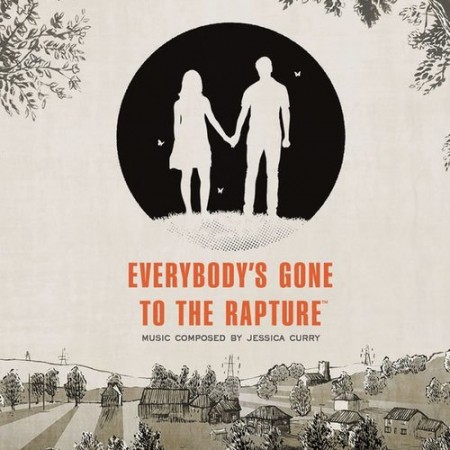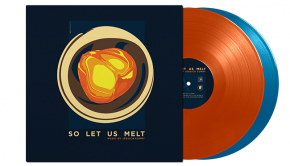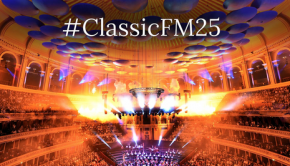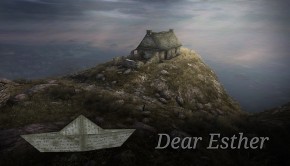Everybody’s Gone to the Rapture
 |
Album Title: Everybody’s Gone to the Rapture (Original Soundtrack) |
| Record Label: Sony Classical |
|
| Catalog No.: 88875131422 |
|
| Release Date: August 07, 2015 |
|
| Purchase: Buy at Amazon |
Overview
Everybody’s Gone to the Rapture, a first person adventure video game developed by Chinese Room partnered with SCE Santa Monica Studio for PS4, is a narrative driven game that takes place in an English village whose residents have mysteriously disappeared. The score, with lyrics by the game writer Dan Pinchbeck, is composed by BAFTA-nominated Jessica Curry and closely linked to the plot and setting of the game. Interestingly, Curry also serve as the director of the game. The music is recorded at the famous AIR Studio in London and features vocals by renowned Welsh soprano Eli Manahan Thomas. The soundtrack is published by Sony Classical, a record label that is home to many top classical recordings.
Body
The game is set in a deserted village in the rural area of Shropshire, England, and the player must discover how everybody disappeared through exploring the rustic countryside. Due to the premise of the game, there are no other characters that the player can interact with but only mysterious floating balls of light to guide them around. As such, environmental sound and music plays an important role in the narrative of the game. To fully convey the pastoral apocalyptic atmosphere of the game, Jessica Curry has created a score loaded with gorgeous orchestral themes and ethereal vocals to bring to life the essence of English countryside. The production values of the score is top notch as Curry hired a string and woodwind orchestra, and not one, but two eminent choirs, namely the Metro Voices and the London Voices to realize her musical vision for the game. Curry had cited influences from English composers Edward Elgar and Vaughan Williams, as can be heard in the highly romantic sound conjured by the luscious strings and haunting choral in the score.
The first track, “All the Earth” begins with the unaccompanied vocal of soloist Elin Manahan Thomas, whose crystal voice pierce through the air like a stream of light. To put it in Curry’s words, Thomas’ voice “is as close to the divine as I think I’ll ever get”. Thomas is a classically trained soprano who specializes in Baroque music. Curry heard Thomas sang in a concert and immediately knew that she wanted her to be in her project. “All the Earth” is a brief track under a minute and serve as a prelude to the second track, “Finding the Pattern”, which begins with a short choral section before the orchestra ensemble took over. Towards the end of “Finding the Pattern”, Thomas returns singing the exact same part from “All the Earth” but with fuller accompaniment before the solo violin leads the final section of the track. These two tracks do a good job in setting the tone for the rest of the soundtrack.
Also noteworthy is the lyrics written by the game writer, Dan Pinchbeck, done in the style of old English and exudes a kind of melancholy that fits the theme of the game. The recurrence of Pinchbeck’s lyrics throughout the score in different musical contexts lends more unity to the music composed by Curry. The subtlety and elegance of Pinchbeck’s words also add more depth to Curry’s compositions, as demonstrated by the lyrics in “All the Earth”:
Their line is gone out through all the earth, and their words to the end of the world. In them hath he set a tabernacle for the sun.
The choral motif that appeared in the beginning of “Finding the Pattern” recurred in “The Sleep of Death”and was expanded upon by Curry. Replacing the choir, Thomas start the piece singing the melody unaccompanied before a solo violin joins in, playing a counter-melody. Most of the lines in “The Sleep of Death” begin with “How long…” and were written as questions. Finally, the choir joins in with Thomas and the violin as the piece reaches a resolution with the final line of the lyrics:
Consider and hear me, O Lord my God; lighten mine eyes lest I sleep the sleep of death.
The entrance of choir at this part of the track was timely as it adds much gravity and provides a sense of closure to the final section of the track. The same set of lyrics in “The Sleep of Death” was reused exactly in the next track, “For Ever”. However, Curry set the text to a completely different musical composition this time, turning “For Ever” into unaccompanied chorale track driven by harmony quite unlike “The Sleep of Death”.
“The Mourning Tree” is a personal favorite of mine from the soundtrack. The style of the piece harks back to the old English art songs with memorable melody and simple accompaniment. The song consists of three stanzas; the lyrics for each stanza are different but all three are set to the same melody. In the first stanza, Thomas’ voice is accompanied by just the piano playing a simple yet elegant arpeggiated figure. The violins join in for the second stanza and the whole ensemble for the third stanza, adding more gravity to the piece progressively, as is appropriate to the narrative of the lyrics telling the story of a woman who was reminded of her lost lover when she saw the birds at the mourning tree.
The musical narrative of “The Mourning Tree” is continued in the following two tracks, “Disappearing” and “All of My Birds”. “Disappearing” is one of the lengthier instrumental tracks in the album, clocking in at 5 minutes, shows plenty of musical development during its runtime and finishes with a delicate flute solo accompanied by the harp on arpeggiated passages not unlike “The Mourning Tree”. Only featuring the third stanza and the last line of the second stanza from “The Mourning Tree”, “All My Birds” has a slower tempo and a comparatively stagnant accompaniment consisting mostly of sustaining notes. The last line of the second stanza, “I heard you coming home”, was an ingenious addition to the track. Thomas sang the entire third stanza with a somber tone in a higher pitch, and then she dragged out “I heard…” on sustaining pitches but didn’t finish the line. Instead the choir took over from Thomas and finished the line for her, which gave the piece an undeniable fatalistic tone as if Thomas wasn’t able to finish the line on her own, made especially apparent when compared the hopeful tone of “The Mourning Tree”.
The melody and lyrics from “The Sleep of Death” returns in “A Beautiful Morning”, but with a more mournful accompaniment and the last line is replaced with lyrics taken from the next track, to serve as a lead-in. “Carry Me Back to Her Arms” is another highlight of the soundtrack. It is a choral piece with four stanzas mainly sung by the male chorus as the lyrics is written from a male perspective. The male chorus started the first stanza singing in unison accompanied by broken chord patterns before breaking into harmony in the second stanza. And then the female chorus joined in the third stanza, adding another layer of harmony and minute embellishments to the melody. Finally the male chorus finishes the piece in unison once again, singing the same line from the ending of “A Beautiful Morning”, bringing the piece full circle.
“Clouds and Starlight” is a gentle lullaby and probably the most hopeful song in the soundtrack with lyrics such as “Fly to dreams and morning’s brim/Starlight, sleep, and love”. It is a choral piece which begins unaccompanied with the female chorus singing the melody and the male chorus humming quietly in the background. The chorus expands the harmony in the second stanza, producing warmer and fuller sound, with a hint of strings accompaniment. Finally the piece ends with an instrumental outro repeating the melody. The next piece, “The Pattern Calls Out”, as the title suggests, utilizes chordal patterns that seems to be inspired by minimalism. The piece begins with some hushed tremolos prior to Thomas joins in singing the line “Underneath the butterfly garden”, which alludes to the coming tracks “The Manifestation” and “The End of All Things”. The first pattern then comes in unobtrusively in a minor tone before the entrance of a brief violin solo playing an almost fragile melody in a high register. Finally the second pattern, played in staccato at a faster tempo, intensifies the mood of the piece abruptly and finishes the track.
In the piece “The End of All Things”, we finally get to piece everything together of what is “Underneath the butterfly garden”. Most of the lyrics of this piece have been scattered throughout the soundtrack and partially inserted into various tracks, like planting little seeds of hints of what’s to come. Thomas once again takes the lead in starting the piece before the chorus and orchestra joins in forming intricate harmonies. The last piece in the soundtrack, “The Light We Cast”, is an unaccompanied choral piece. The piece started with only the female chorus singing the first stanza; the male chorus then joins in the second stanza forming four-part harmonies; in the third stanza more textures are added with non-simultaneous parts such as echoes and delays; finally in the last stanza the male and female chorus once again sang in unison before repeating the last line in intricate harmonies. Curry truly demonstrates her mastery in composing choral music with “The Light We Cast”.
Summary
The original soundtrack of Everybody’s Gone to the Rapture is one of the most immaculately composed and produced video game score I have ever listened to. There is not a single extraneous note in the score and I can hear the painstaking effort Curry put into crafting every piece in the score to conjure up the pastoral ideal represented by the English countryside, expertly brought to life by the orchestra and the two choirs, Metro Voices and London Voices. While Pinchbeck’s nuanced lyrics gave more depth to the music, more impressive is the ingenious ways Curry had incorporated the lyrics into the score. I have not played the game before and thus could not comment on how well the music work in-game. But with the original soundtrack of Everybody’s Gone to the Rapture, Curry have created a masterpiece that has transcended the medium it is written for and a meticulously painted soundscape that needs to be experienced in its entirety. I would highly recommend this album to all music enthusiasts, especially those who love classical choral music.
Do you agree with the review and score? Let us know in the comments below!
5
Posted on March 12, 2016 by KT Wong. Last modified on March 12, 2016.















Wow, what a magical indepth review. Thanks so much for taking the time to write this, KT!